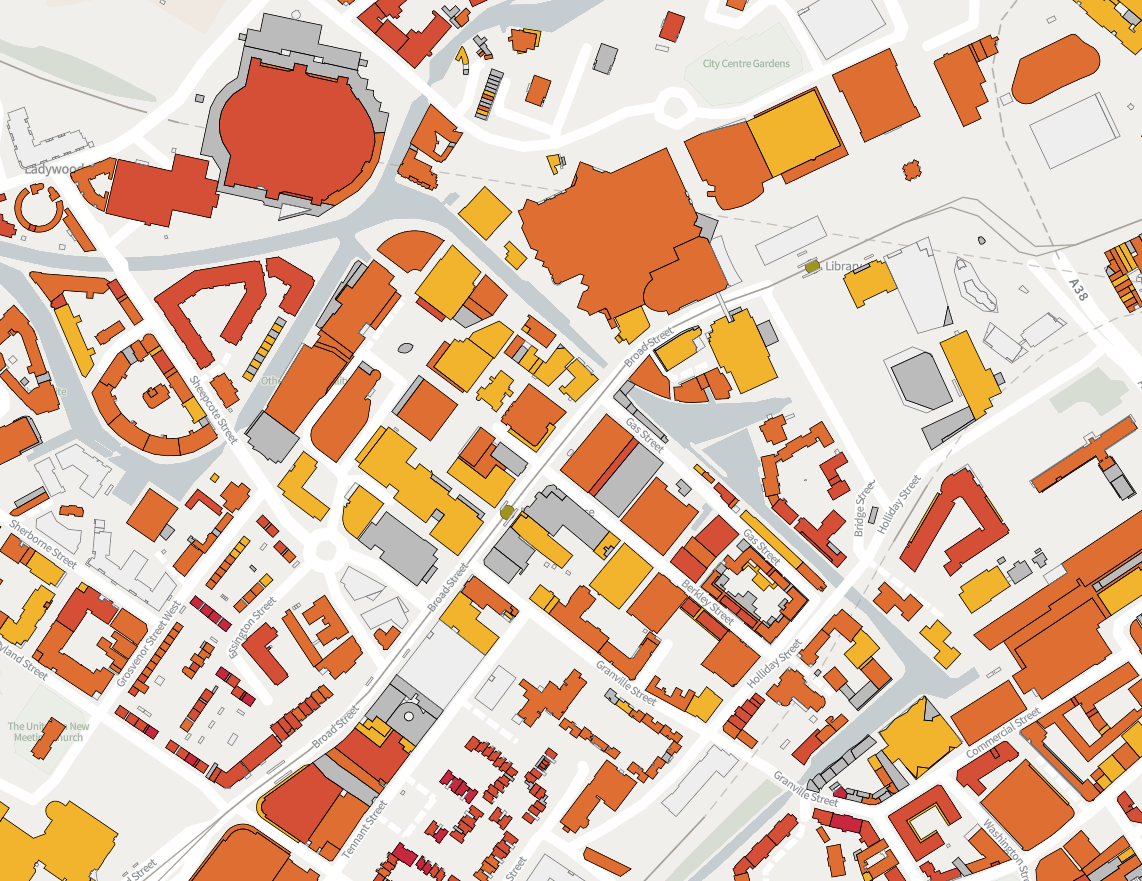Solar Wizard Glossary

Terms used in Solar Wizard are defined below.
Aspect
Aspect is the direction which a roof faces, described in degrees. 180° is due south. south-facing panels in the UK produce the most electricity, though panels facing between south-east, and south-west are generally considered good. East or West facing panels are good to generate electricity in the morning or evening, which can be useful if lots of electricity is consumed at these times – but they will generate less electricity in total.
Area
This is the area of solar panels that we predict can be fitted on the roof of the building.
Cost/kWp
This is the component of the cost that changes as your installation gets bigger. It includes things like panel costs (as your installation gets bigger, you need more panels, each at a set cost). Our default values are derived from historical installation cost data, provided by MCS.
Easting and Northing
The coordinates displayed here are for the OSGB 36 system.
Electricity price per kWh
This is the value in £ that you would normally pay for one kWh (one unit) of electricity. The default value is the (October 2022) price cap for residential electricity.
Exported electricity price per kWh
This is the value in £ that you would be paid for exporting a kWh of electricity under your smart export guarantee tariff. The default price is based on current offerings. But if you know which tariff you'd choose, you should change it to that rate.
Fixed cost
This is the component of the cost that doesn't change as your installation gets bigger. For example, the amount of scaffolding will be the same for your building whether you install one panel or 20. Our default values are derived from historical installation cost data, provided by MCS.
Horizon profile
The horizon shading profile represents the amount of sunlight that will be blocked in each direction from obstructions that rise above the horizon. This affects how much sunlight reaches the panels at different times of day, and therefore how much electricity the panels can generate.
Footprint
This is the surface area covered by the house, as if you were looking directly down on to it.
IRR
The Internal Rate of Return of a project is the discount rate that makes the NPV equal zero. In other words, it is the discount rate for which the sum of the present values of all future cash flows is equal to the initial investment.
Generally, if the IRR of a project is greater than the discount rate then the project is profitable.
kWh
kWh is short for kilowatt-hour and is a measure of electricity. A one-kilowatt (kW) appliance running for an hour consumes one kWh.
kWp
kWp is short for kilowatt peak. This is the electrical output of a panel under ‘standard test conditions’ – broadly designed to represent a clear, sunny day.
kWh/kWp
kWh/kWp (yield) is the annual electricity generation per kilowatt of panel capacity. This is a simple way to assess the yearly generation compared to the area of panel required. The bigger the number, the more electricity generated by the same area of panels.
The maximum possible yield will be attained by a South-facing, 30-40 degree slope panel which is totally unshaded. How high this yield is will vary across the UK - higher yields are possible on the South coast than in Scotland.
Latitude and longitude
The coordinates displayed here are for the WGS 84 system.
Layers
Layers are datasets that can be added (layered) on top of the map. These allow you to view only data that is of interest to you, and prevent the map becoming too cluttered.
LiDAR
LiDAR stands for Light Detection and Ranging and is used for measuring the height of objects. It works by pulsing a laser at the ground and measuring the time it takes to be reflected. The return time can then be converted to a distance. This allows the height of areas to be quickly mapped.
From the above process a “digital elevation model” - a map showing the height of an area. We take this map and use it to detect the size, slope, and aspect of a roof. We also can detect the amount of shading that will fall on a building. From this we are then able to determine how many panels can fit on a roof, and how much electricity they may produce.
Listed Building
This is a building on one of the statutory lists maintained by Historic England, which require special permissions to alter - including adding solar panels.
Area
This is the area of solar panels that we predict can be fitted on the roof of the building.
LSOA
LSOA is an abbreviation for Lower Super Output Area. This is a term used by the census to divide the country up into results areas. An LSOA covers around 1500 people.
MWh
MWh is short for megawatt-hour and is a unit for measuring electricity. There are 1000 kWh per MWh.
Net Present value
The Net Present Value of a series of future cash flows is a way of representing the value of those cash flows in “today's money”. That is to say that one pound received today is worth more than one pound received in a year's time, since it can be immediately invested and have interest accrue.
To account for the returns that could be accrued by investing currently-held capital, the NPV calculation uses a discount rate, which should be set to the expected rate of return of an investment of similar risk to the one in question.
The NPV is defined as the sum of all future cash in-flows - discounted to their present value - minus the initial investment.
The discount rate to use in NPV calculations is a matter of opinion. Often it is set to the expected interest from an alternative use of the money - for example interest earned by keeping it in the bank.
Payback period
We use the simple payback period. This gives the number of years it takes for returns to equal the initial investment. This method does not take into account the future value of those returns.
Per roof plane solar potential score
Each building has a score from 1 to 5 based on the yield. The yield thresholds we use are:
ROI
The Return on Investment is the net profit divided by the value of the initial investment, given as a percentage. For example, a ROI of 120% means a return of £1,200 from an initial investment of £1,000.
Slope
Slope is the angle of a solar panel from horizontal. In the UK a slope of 30° to 40° will give the best performance. For a pitched roof this will be the same angle as the slope of the roof.
Solar potential score
Each building has a score from 1 to 5 based on the yield. The yield thresholds we use are:
Time period
This is the time period that we perform financial calculations over. Generally, it should be set to the expected lifetime of the solar panels to give the best results.
Yield
See kWh/kWp.


